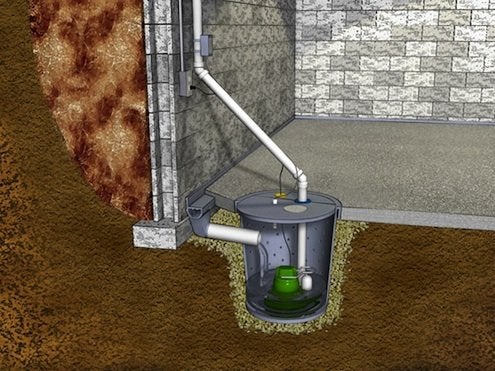It may be a much-anticipated time for family fun, but for Kansas homeowners, fall also means one extra thing: rain. A lot of it, too! It pays to start making all your preparations now, including the crucial duty of inspecting your sump pump, to prevent damage to your home during the impending rainy season.
Having trouble testing your sump pump? Before the rain storms arrive, check out these easy tips to make sure your pump is reliable.
How to Test Your Sump Pump in Four Easy Steps
Your sump pump, which is often installed in the basement, drains water that seeps into and accumulates in the foundation of your home. This is especially important during and after powerful storms. If your sump pump isn’t functioning properly, pooled water can result in a variety of tiny and big issues, like as decay, floods, and mold and mildew.
Thankfully, it’s generally not too difficult to test your sump pump. Simply follow to these four steps:
1. Check for damage to the sump pump.
The sump pump should be examined for any signs of damage first. Remove the cover and inspect the interior of the crock for any obstructions, fissures, or other obvious accumulation, particularly near the drain. Check the check valve for clogs and make sure it is operating properly.
2. Inspect the drainpipe.
Making sure there are no obstructions in the pipe that transports water away is the next step after testing your sump pump. Remove the drain line and use a plumber’s snake, wet-dry vacuum, or high-pressure nozzle to clear any obstructions.
3. Unplug and then replug the pump cord.
Two electrical cords are most likely attached to your sump pump: a float cord that connects into the wall and a pump cord that attaches to the back of the float cord.
Unplug the pump cord from the float cord and plug it straight into a wall outlet to verify that these electrical parts are functioning. As soon as you accomplish this, your pump should start to function, as evidenced by a whine or hum. Make sure to place the cords back where they were if everything is operating as it should.
4. Fill it with water and watch it drain.
Checking to see if the sump pump actually removes water is the last step in the “how to test your sump pump” puzzle. Watch what happens after adding some water from a bucket to the sump pump. If everything is working properly, the switch will turn on when the water level is sufficient. Make sure the pump also turns off by waiting for the water to drain.
Don’t hesitate to get in touch with Advanced Plumbing if your sump pump fails any of these tests or if you’re unsure whether its performance is satisfactory. All of our Kansas plumbers are completely licensed and experienced in providing sump pump services. They are skilled not just in sump pump testing but also in making rapid work of any problems.


